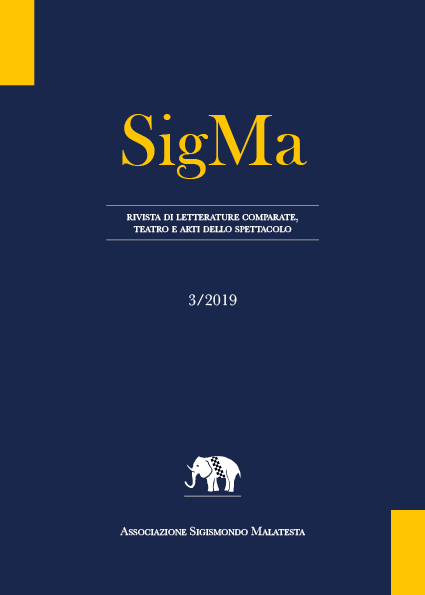Making room for oneself in Galit and Gilad Seliktar’s “Farm 54”
DOI:
https://doi.org/10.6093/sigma.v0i3.6575Keywords:
graphic novel, domestic space, Susan Meiselas, Galit Seliktar, Gilad SeliktarAbstract
The article’s aim is to explore the representation of the domestic space in contemporary Israeli graphic novels with particular emphasis on the space of the private room. This relatively recent concept of a space that has been understood according to the symbiotically mutual definition of the individual and the collective is the key feature of a domestic space that in order to be accessible must be devoid of human presences. Temporarily or permanently abandoned, these rooms become the place where the humans left their traces, as sort of daguerreotype-like space in its technical impossibility to consider the evanescent presence of human beings as opposed to the assumed stability of things. From this perspective only the objects left behind in these rooms can allude to the protagonists’ story reconfiguring these rooms between absence and presence, like in Susan Meiselas’s project A room of their own. This combination of loss and alterity defines the domestic space as the sum of the objects left behind from the absent or voiceless protagonists of stories that is up to readers to piece together. In contemporary Israeli graphic novels, the protagonists of these stories might have abandoned their domestic space in an attempt to disappear by making a clean break, or against their will, or sometimes simply because they grew up. In order to know their stories, the readers have to follow the mute clues going from one room to another.
Approaching the notion of representation and its peculiarities with respect to the graphic novel, the article explores the private rooms as a deserted space in the works of Galit and Gilad Seliktar.
Downloads
Downloads
Published
How to Cite
Issue
Section
License
SigMa Journal is an open access, online publication, with licence:
|
|
CCPL Creative Commons Attribution |
The author retains the copyright of his work whilst granting anyone the possibility “to reproduce, distribute, publicly communicate, publicly exhibit, display, perform and recite the work”, provided that the author and the title of the journal are cited correctly. When submitting the text for publication the author is furthermore required to declare that the contents and the structure of the work are original and that it does not by any means compromise the rights of third parties nor the obligations connected to the safeguard of the moral and economic rights of other authors or other right holders, both for texts, images, photographs, tables, as well as for other parts which compose the contribution. The author furthermore declares that he/she is conscious of the sanctions prescribed by the penal code and by the Italian Criminal and Special Laws for false documents and the use false documents, and that therefore Reti Medievali is not liable to responsibilities of any nature, civil, administrative or penal, and that the author agrees to indemnify and hold Reti Medievali harmless from all requests and claims by third parties.


